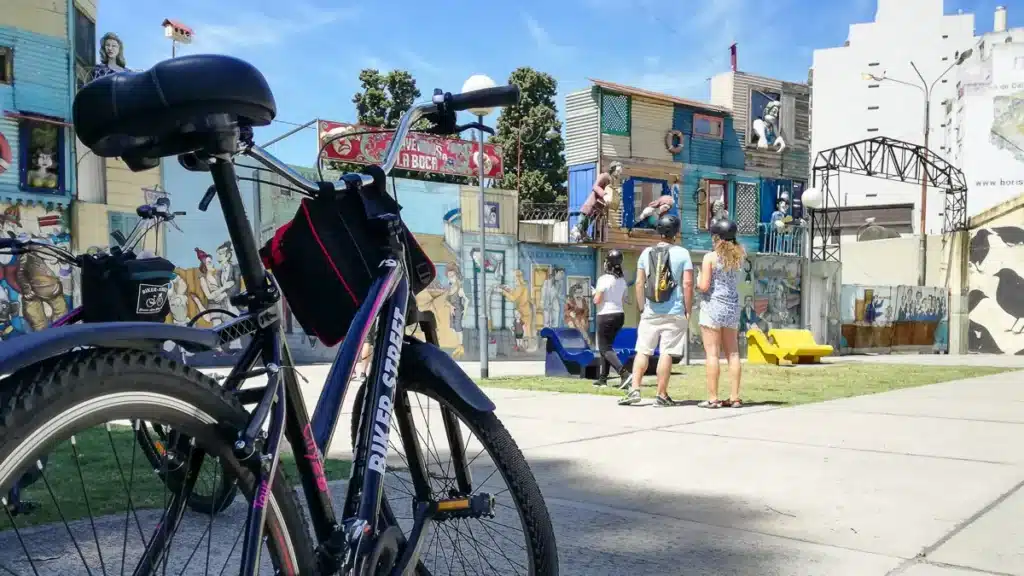We last reviewed this post on September 23th, 2025
Planning a trip to Buenos Aires and wondering what to see first? Or maybe you’ve already landed and want to make the most of your time? Either way, this guide is for you.
At Biker Street, we’ve created a list of 13 things to do in Buenos Aires that goes beyond the usual tourist checklists. These are our personal picks—no sponsorships, no paid promotions—just a local’s love for the city. From historic plazas and colorful barrios to hidden cafés and late-night adventures, you’ll find plenty of ideas to explore Buenos Aires like a porteño.
Table of Contents
1. Recoleta: The Paris of South America
Recoleta is one of Buenos Aires’ most elegant neighborhoods, often called the Paris of South America. Its French-style mansions and historic avenues, like Avenida Alvear and Avenida del Libertador, make it perfect for a relaxed stroll. For an even better view, a bike ride along Libertador lets you admire the architecture without worrying about heavy traffic.
Recoleta Cemetery
The world-famous Recoleta Cemetery is a must-see. It’s a peaceful labyrinth of mausoleums, each one a small piece of art. Take your time to admire the sculptures and details. Tip: Arrive early in the morning to avoid the crowds.
Recoleta Nightlife
Around the cemetery, you’ll find coffee shops, bars, and clubs. The area is lively at night and attracts many visitors thanks to its hotels and short-term apartments.
Parks & Monuments
Recoleta is rich in green spaces. Near the National Library and UBA Faculty of Law, you’ll find wide parks where locals picnic, read, or share mate. Don’t miss the Floralis Genérica, a huge steel flower that opens and closes with the sun—a modern symbol of the city.
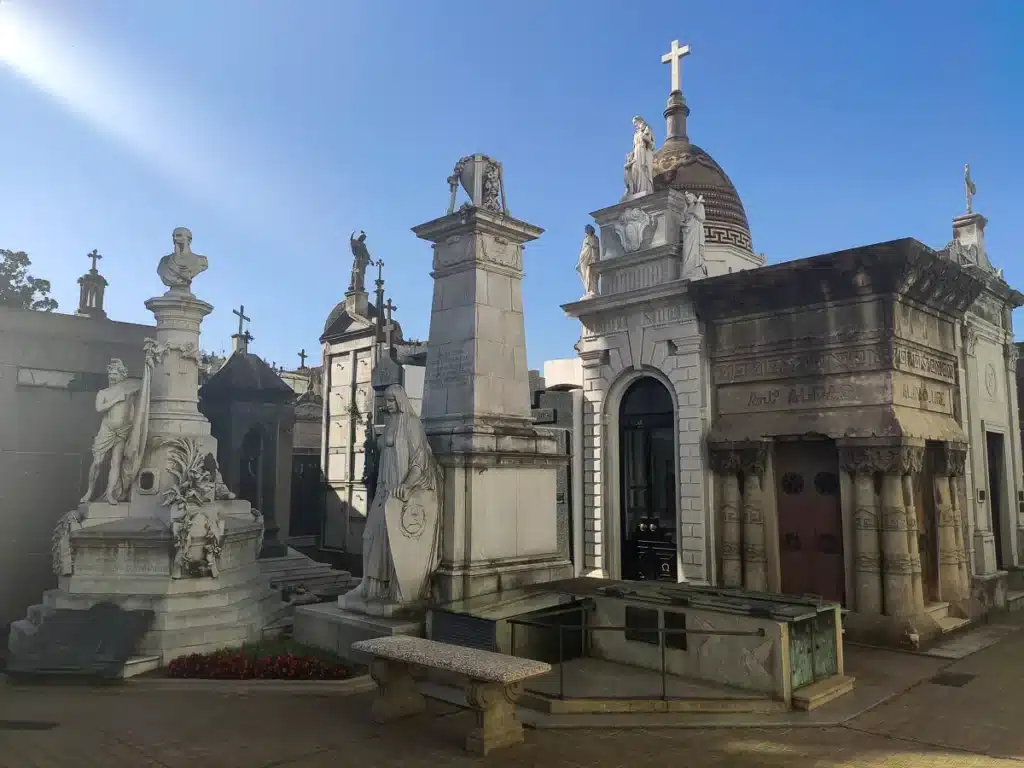
2. Plaza de Mayo: Heart of Buenos Aires
The Plaza de Mayo is where Buenos Aires was founded and where history has unfolded for over 200 years. From political protests to national celebrations, it remains the civic heart of the city.
Monuments & Buildings
Around the square you’ll find:
- La Casa Rosada, the presidential palace
- La Catedral Metropolitana
- El Cabildo, the colonial town hall
- La Pirámide de Mayo and Belgrano’s Memorial
Avenida de Mayo
Connecting the Plaza with Plaza del Congreso, this avenue is lined with old European-style buildings. Stop at Café Tortoni, the city’s most iconic café, for a coffee or hot chocolate.
Tip: Demonstrations are common here. Weekends are quieter, while weekdays are full of office workers and students.
Tip: Demonstrations are common here. Weekends are quieter, while weekdays are full of office workers and students.
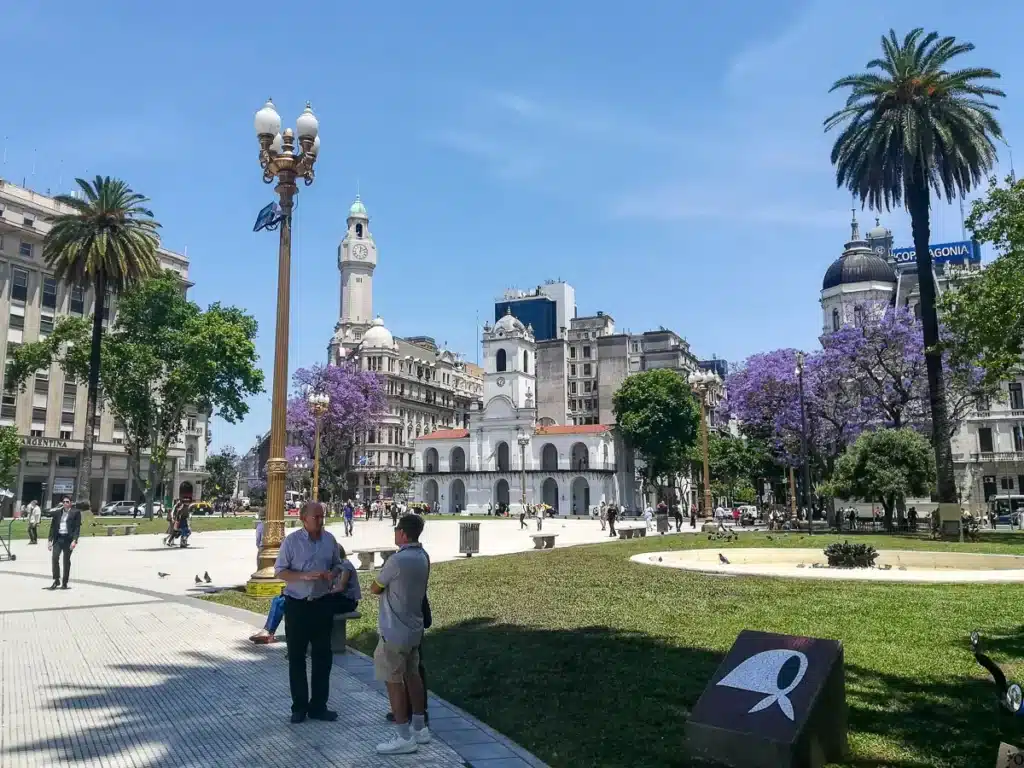
3. San Telmo: History & Tango
Walking through San Telmo feels like stepping back in time. Its cobblestone streets and colonial houses tell the story of Buenos Aires’ early days.
Markets
San Telmo is famous for its markets:
- The San Telmo Market, an indoor hall with food stalls, antiques, and vintage treasures.
- The Sunday street market, full of music, crafts, tango dancers, and street performers.
Eat, Drink & Dance
At Plaza Dorrego, the neighborhood’s main square, you’ll find tango shows, lively bars, and traditional cafés. A slow walk or a bike ride is the best way to enjoy its over-century-old architecture.

4. La Boca: Color and Passion
La Boca grew around one of the city’s first ports and became home to thousands of Italian immigrants.
A Tourist Magnet
It’s famous for Caminito, a pedestrian street of colorful houses, tango artists, and souvenir shops. The neighborhood is also home to La Bombonera, the stadium of Boca Juniors, one of Argentina’s most iconic football clubs.
Safety tip: Stick to the tourist areas, especially at night or on match days.
Safety tip: Stick to the tourist areas, especially at night or on match days.
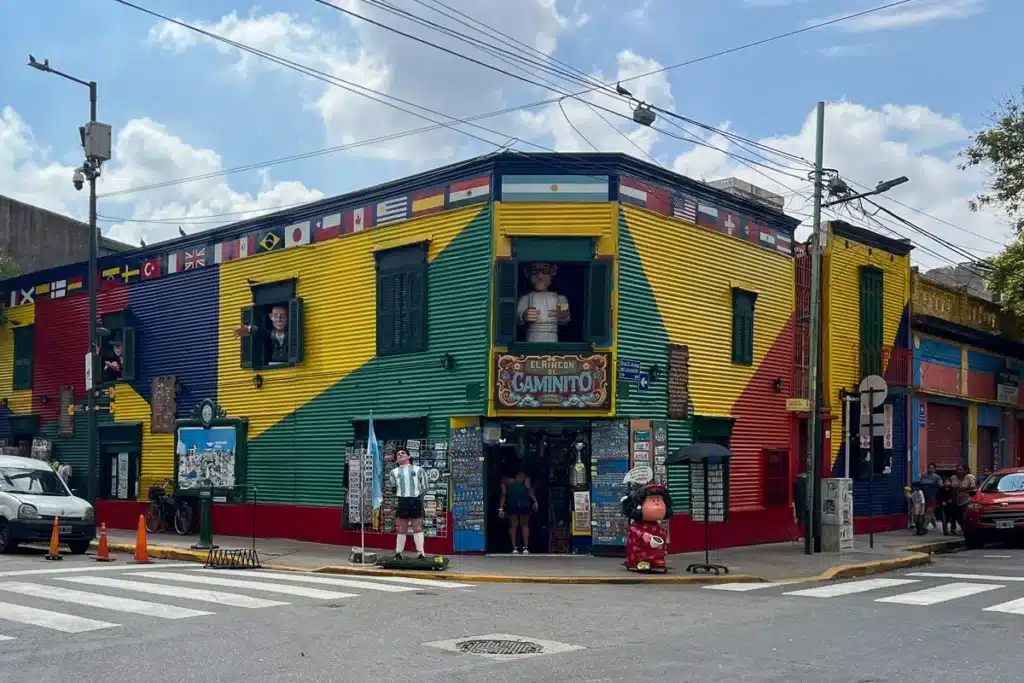
5. Palermo: Parks, Shops & Nightlife
Palermo is the city’s largest barrio, so big it has “sub-neighborhoods” like Palermo Soho, Palermo Hollywood, and Palermo Chico—names that sound like they came from a real estate agency!
Green Areas
The Bosques de Palermo are the lungs of the city. Lakes, rose gardens, bike trails, and the Planetarium make it perfect for a picnic or a relaxing ride. On weekends, this is where locals gather for sports and family time.
A Lively Barrio
At Plaza Serrano and Plaza Armenia, you’ll find cafés, boutiques, breweries, and a buzzing nightlife. It’s one of the best places to enjoy the modern side of Buenos Aires.
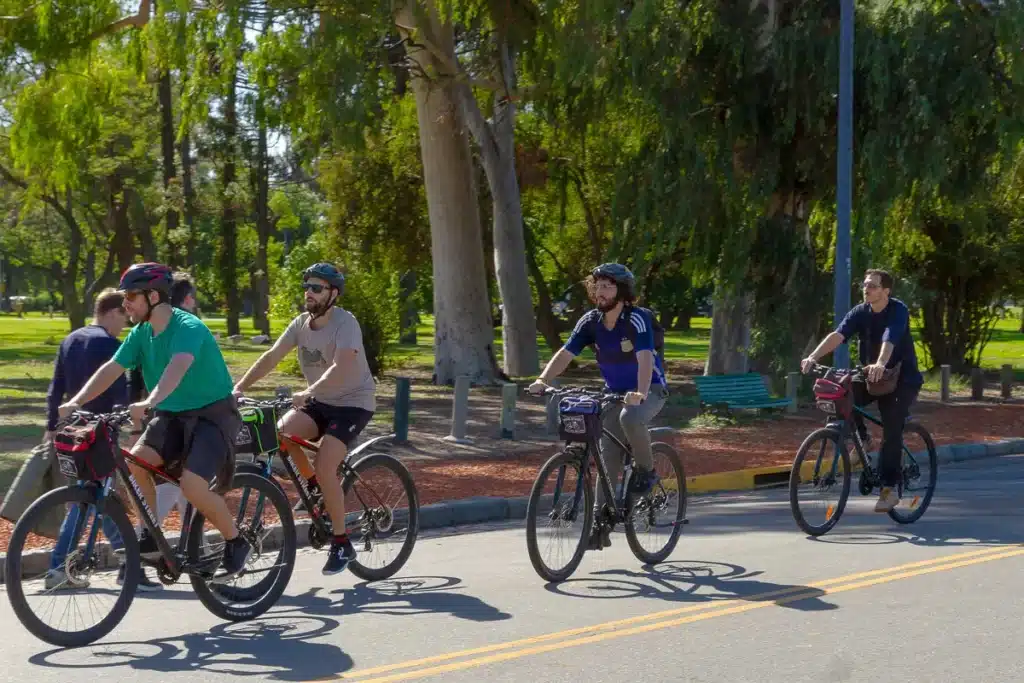
6. Puerto Madero: Modern Charm
Puerto Madero was reborn in the 1990s, transforming old port warehouses into one of the most modern districts in South America.
A Modern District
Think of sleek glass skyscrapers mixed with red-brick docks and international restaurants.
Family & Cycling Experience
Wide streets and riverside parks make it ideal for biking or walking. On the edge, the Reserva Ecológica offers a complete change of scenery: wetlands, birds, and quiet trails just minutes from downtown.
Weekend Vibes
On weekends, locals flock here for a stroll, a jog, or a bike ride. Don’t miss a street-side choripán from one of the food trucks.
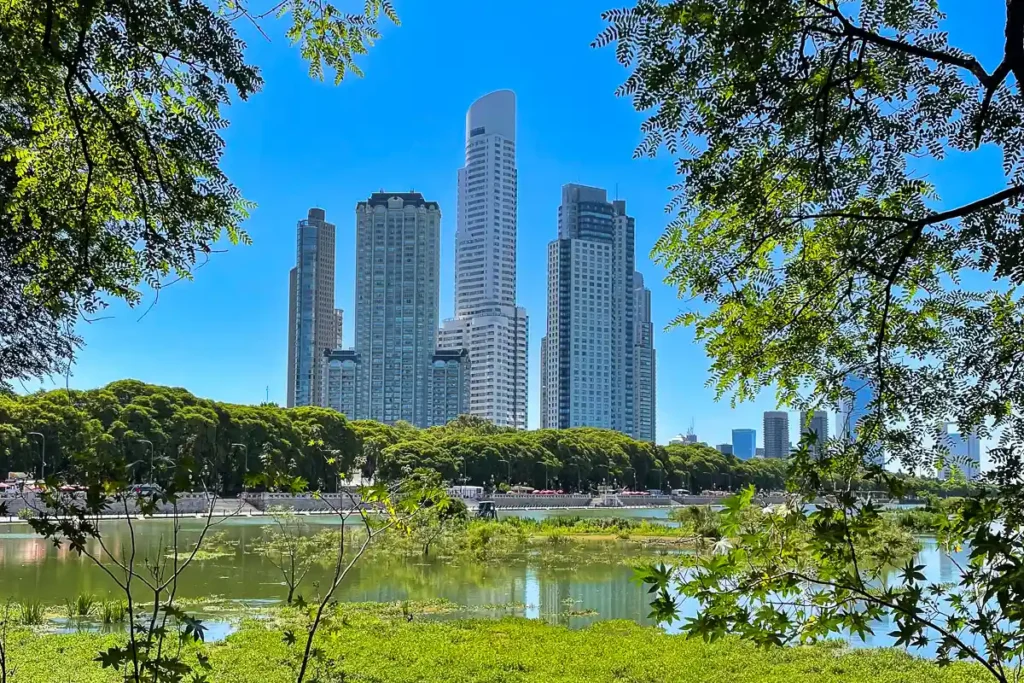
7. What to Eat and Drink
Argentine food is simple, hearty, and delicious. Here’s what to try:
- Pizza & Empanadas: Order pizza with fainá (a chickpea flatbread) or classic empanadas.
- Meat: Cuts like asado de tira, vacío, entraña, and bife de chorizo are barbecue favorites. And of course, the famous choripán with chimichurri.
- Sweets & Merienda: Flan with dulce de leche, artisanal ice cream, and pastries (facturas) with mate in the late afternoon.
- Drinks: Argentina’s star wine is Malbec, while younger crowds prefer craft beer or fernet with coke.
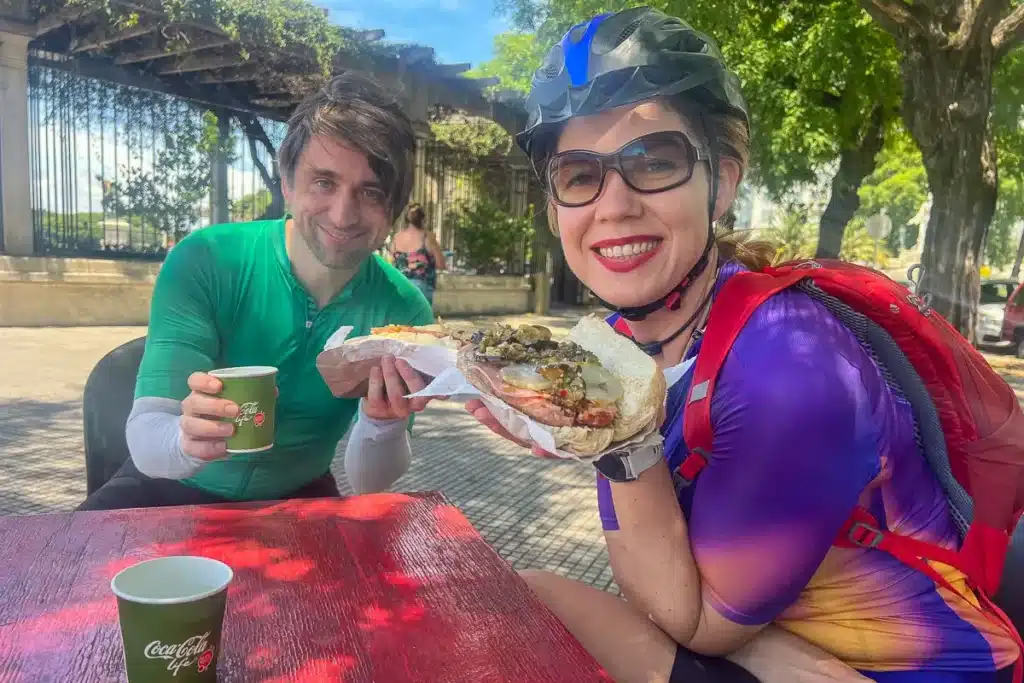
8. Buenos Aires: Cultural City
Culture is everywhere in Buenos Aires.
- High Culture: Visit the Teatro Colón, one of the world’s top five opera houses. Many museums are free to enter.
- Street Life: Explore street art in Palermo and San Telmo. Did you know Buenos Aires has the most bookstores per capita in the world? Don’t miss El Ateneo Grand Splendid, a former theater turned into a stunning bookshop.
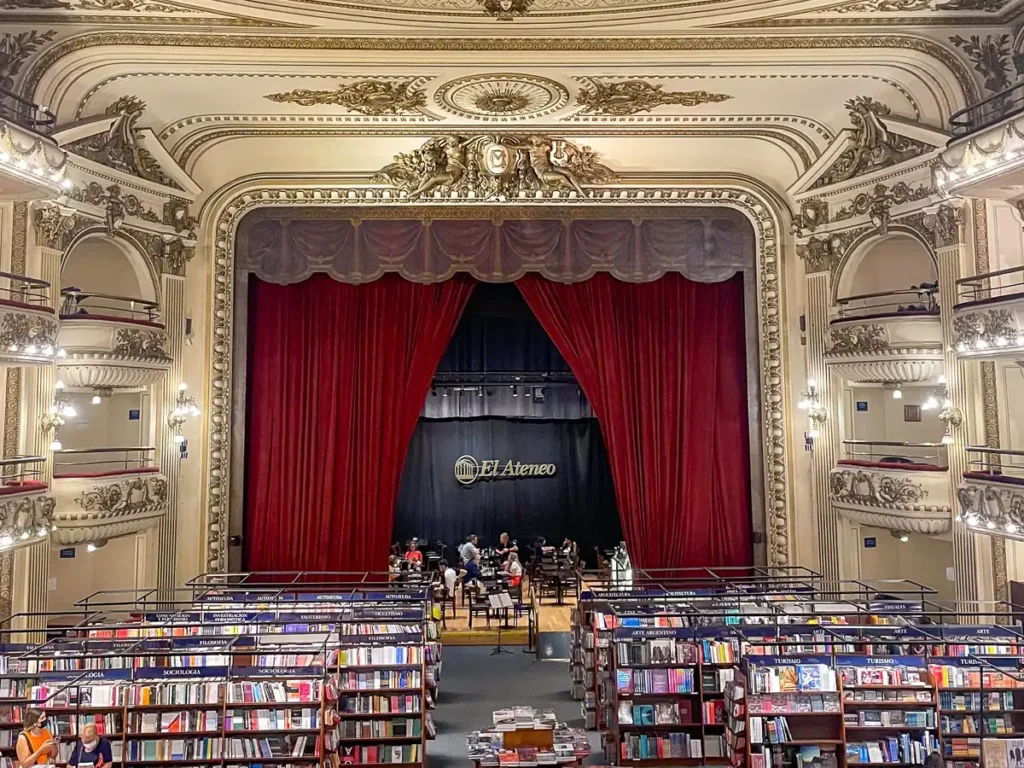
9. Bares Notables: Historic Cafés
These historic cafés are part of the city’s cultural heritage and are protected by law.
- Atmosphere: Step into the past with their wooden furniture, marble tables, and tiled floors.
- Menu: Expect traditional sandwiches, pasta, and desserts.
- Inspiration: Many writers and musicians used these cafés as their creative spots. Some even host live music or poetry readings today.
10. Porteños’ Night: From Bars to Boliches
In Buenos Aires, the night starts late. Dinner is at 9 pm, bars get busy around midnight, and clubs (boliches) peak at 3 am.
- Where to Go: Palermo and San Telmo have bars and clubs with every music style.
- Tango: For something truly authentic, visit a milonga, where locals dance tango to live orchestras.
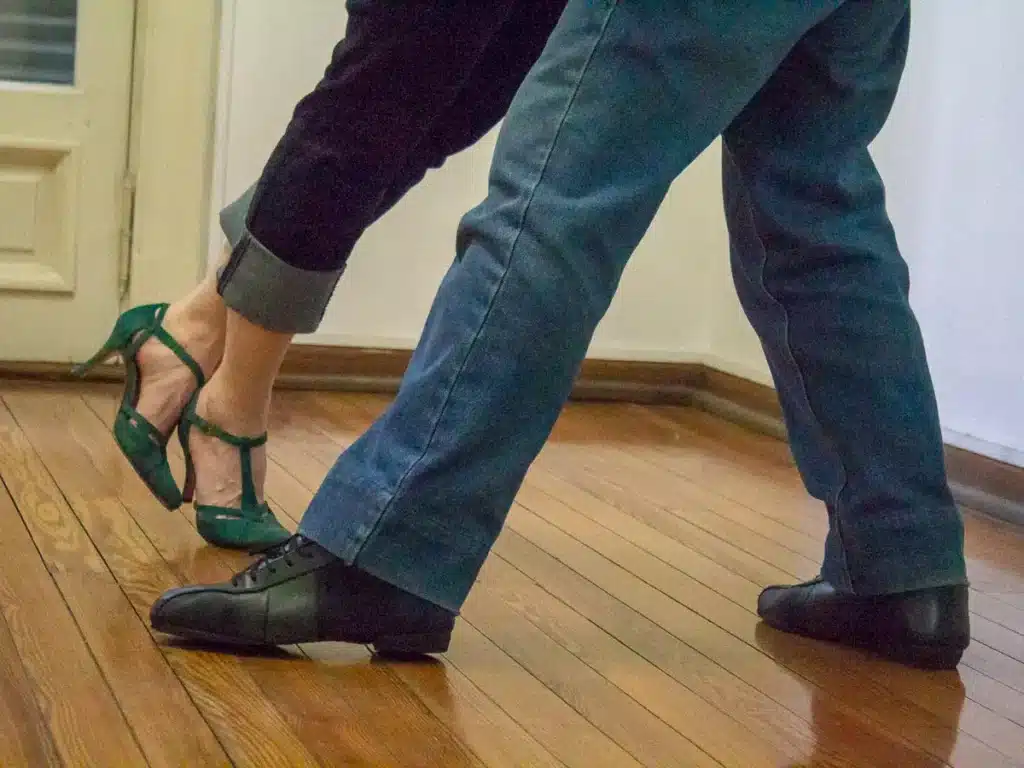
11. Green Areas: Relax & Bike
Buenos Aires may be a big city, but it’s full of parks and green escapes.
- North: The Rose Garden, Botanical Garden, and Costanera Norte.
- South: The Reserva Ecológica, with long trails perfect for cycling, jogging, or birdwatching.
12. Fútbol: An Argentine Religion
Football isn’t just a sport in Buenos Aires—it’s pure passion. The city has more football stadiums than any other city in the world.
- Clubs: River Plate and Boca Juniors are the giants, but every neighborhood has its team.
- Matches: Tickets can be difficult to get, so consider joining a guided football experience with transport and seats included.
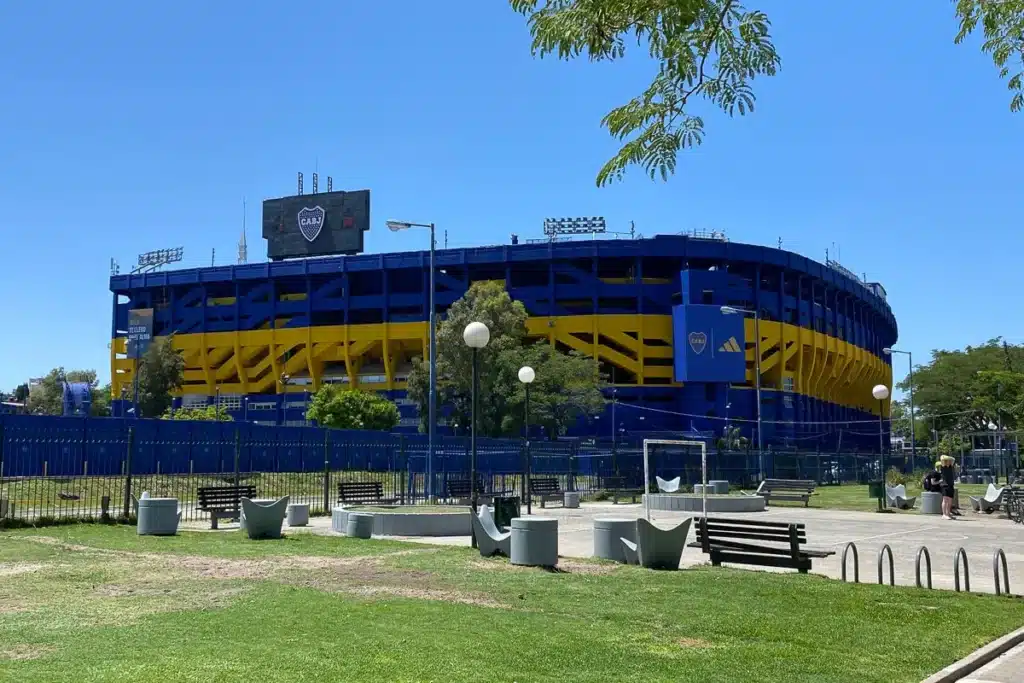
13. Albergues Transitorios: A Curious Bonus
Known as telos, these short-stay hotels are part of Buenos Aires’ unique culture. Rooms are themed—think jungle, spaceship, or neon fantasy—with jacuzzis and mirrors everywhere.
They’re not for everyone, but they’re a quirky curiosity for visitors. Peak times: Friday and Saturday nights. 😜
They’re not for everyone, but they’re a quirky curiosity for visitors. Peak times: Friday and Saturday nights. 😜
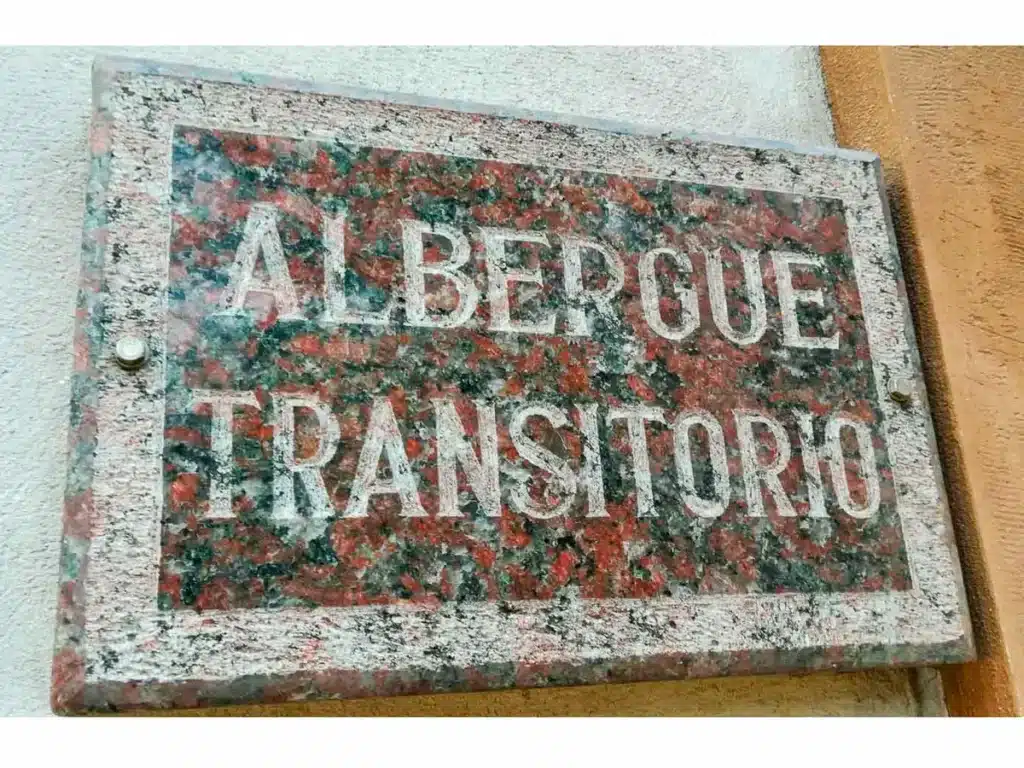
Enjoy Buenos Aires Like a Local
Now that you know the city’s highlights, why not experience them on two wheels? Buenos Aires is flat, bike-friendly, and filled with stories that come alive when you ride through them.
Join a Buenos Aires bike tour with Biker Street—it’s not just sightseeing, it’s the local way to experience the city.
👉 Book your bike tour today and start your Buenos Aires adventure.
👉 Book your bike tour today and start your Buenos Aires adventure.
